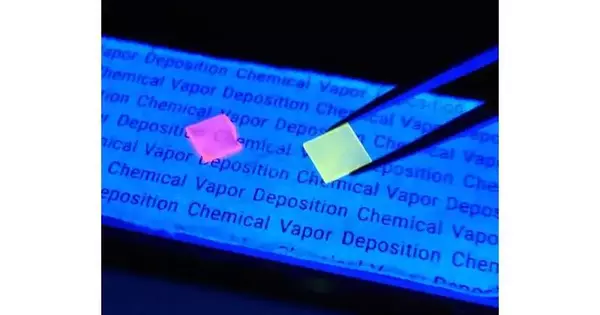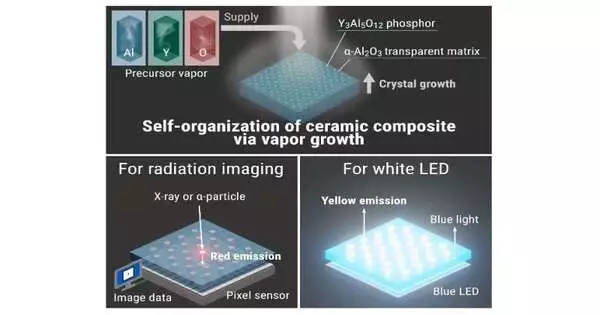When multiple solid phases solidify from a liquid phase, a self-organizing process results in the formation of a three-dimensional (3D) pattern, which is what gives metals and ceramics their eutectic structure. In the past, it was thought that only a melt-solidification process could produce eutectic structures.
A chemical vapor deposition (CVD) method developed by researchers at Yokohama National University (YNU) makes it possible for precursor gases to react and produce solid-state composites with ordered structures in a YAG (yttrium alumina garnet)-alumina ceramic eutectic system.
Under Al-rich conditions, they observed the growth of spatially ordered rod- and lamellar-shaped YAG crystals on a sapphire wafer within an alumina matrix. In contrast, they observed the development of ordered alumina crystals with a YAG matrix under Y-rich conditions. The 3D patterns were determined by the precursor’s composition and the sapphire seed crystal that was chosen. The CVD process allowed for a wider range of chemical compositions to be used to create such patterns than the melt-solidification method.
“Our experiments show that YAG-alumina chemically deposited eutectics have potential applications in environmental-resistant LED lighting and high-resolution X-ray imaging,”
Yuri Mitsuhashi, lead author of the study,
Additional rare-earth elements can be doped into the chemically deposited YAG-alumina eutectics to serve as luminescent centers. Cerium ions, for instance, produce white light for solid-state lighting by emitting yellow light when exposed to blue LEDs. When exposed to X-rays passing through a semiconductor device, europium ions produce red light for X-ray radiography. “Yuri Mitsuhashi, the lead author of the study, conducted the experiments while he was a graduate student at YNU. Our experiments demonstrate potential applications of YAG-alumina chemically deposited eutectics as environmental-resistant LED lighting and high-resolution X-ray imaging,” he says.

Under UV light, a photograph of chemically deposited europium- and cerium-doped YAG-alumina eutectics. Credit: Yokohama National University.
Alumina is frequently utilized in optical and structural components and has long been recognized as a robust refractory ceramic material. As functional ceramic materials for applications like energy materials, lasers, and phosphors, aluminates, such as perovskites and rare-earth aluminum garnets, have been the subject of extensive research.
Shogen Matsumoto, who completed his Ph.D. at YNU and constructed a lab-made X-ray imaging system, says, “Among the aluminates, rare-earth aluminum garnets and perovskites have attractive properties and fortunately have eutectic systems with alumina.” “We can synthesize a novel crystal that combines the benefits of alumina and aluminate,” he stated.
This finding demonstrates that the melt-solidification and vapor deposition processes are both capable of producing 3D patterns in ceramic eutectic composites. Akihiko Ito, an associate professor at YNU and the principal investigator, states, “CVD is ready to make ceramic eutectic composites as functional or protective layers over substrate materials.”
“In contrast, the melt-solidification procedure is impractical because it necessitates pouring a high-temperature melt that reaches more than 2,000 degrees Celsius in order to form ceramic composite coatings on substrates. “Elucidating the mechanism behind chemically deposited eutectics will be the focus of further research,” Ito stated.
The results have been published in the American Ceramic Society Journal.
More information: Yuri Mitsuhashi et al, Chemical vapor deposition of ordered structures in YAG–alumina eutectic system, Journal of the American Ceramic Society (2023). DOI: 10.1111/jace.19176





